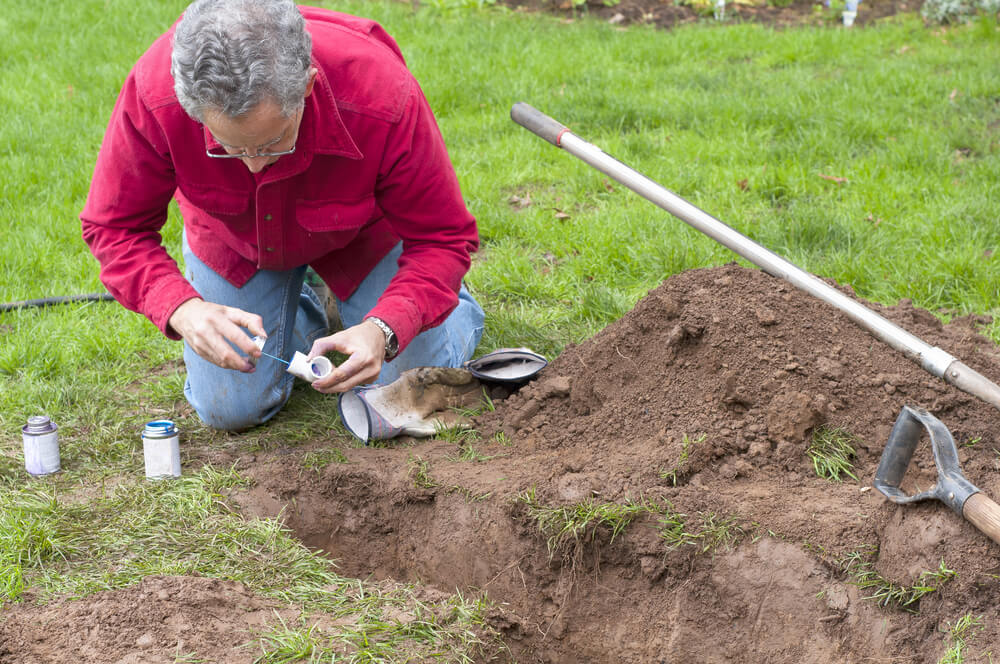As the chill of winter thaws and the first signs of spring begin to show, it’s time to think about waking your garden from its slumber. The key to a lush, vibrant landscape is to ensure your underground sprinkler system is ready to go back into action.
Getting your underground sprinkler system ready for spring is not just a task; it’s a crucial step toward a thriving garden. In this article, we’ll walk you through the process, ensuring you’re well-prepared for the transition from winter to spring.
Common Issues as Seasons Change
The transition from winter to spring can be tough on your irrigation system. After months of inactivity, problems like leaks, blocked sprinkler heads, and damaged pipes can surface, potentially leading to ineffective watering or even water waste. If addressed, these issues can ensure the health of your lawn and garden is maintained as they emerge from winter dormancy.
Step-by-Step Guide to Preparing Your Underground Sprinkler System
Although Naiad recommends trusting in one of our experienced irrigation professionals for this task, we’re happy to share some valuable tips and guidelines to help you get your irrigation system spring-ready, including:
1. Inspect Your System
Before turning anything on, visually inspect all visible components of your irrigation system for damage. Look for signs of wear or breakage on sprinkler heads and valves, which can occur during winter due to freezing and thawing cycles.
2. Gradual Activation
To avoid a sudden surge that can stress and damage the system, gradually fill the pipes with water. This cautious approach helps prevent cracking or bursting when a system is quickly pressurized after being dormant.
3. Check the Control Panel
Update your irrigation system’s control panel settings to reflect the current needs of your lawn and garden. Spring often requires different watering schedules and durations than summer, as plants are just beginning to grow and the weather is cooler.
4. Clean Sprinkler Heads
Clear any debris that has accumulated on or around the sprinkler heads. Even a small blockage can significantly impact the efficiency of your watering schedule, leading to dry spots or overwatering.
5. Conduct a Test Run
Run your system through a complete cycle to ensure every zone operates correctly. Watch for uneven distribution or leaks, and make adjustments as needed. This step is vital for identifying issues that must be made visible and ensuring your system is optimized for your landscape’s current needs.
6. Schedule Maintenance
Consider scheduling a professional maintenance check after reactivating your system and addressing immediate concerns. An expert can identify and resolve less apparent issues, such as valve leaks or electrical problems, ensuring your system operates at peak efficiency throughout the season.
Seasonal Tips for a Thriving Garden
As you prepare your underground sprinkler for the warmer months, remember that early spring is the perfect time to reassess your garden’s irrigation needs. Incorporating water-wise gardening practices, such as choosing drought-tolerant plants and mulching, can further enhance your garden’s resilience and beauty while conserving water.
To learn about our innovative time irrigation systems, which can help you cut water costs, read this article.
Call Naiad For Your Landscape’s Spring Awakening
Don’t let the transition from winter to spring catch you off guard. Preparing your underground sprinkler system is essential for a healthy and vibrant landscape.
Should you encounter any difficulties with your irrigation system, spot leaks, face challenges in resolving problems, or need help with maintenance, consider contacting our experts at Naiad for assistance with your underground sprinkler repair and startup.
Our team of professionals is here to help your green spaces thrive from the ground up. Let’s make this spring your landscape’s best season yet!
Book a service or call us today @ 587-200-3994. We provide top-notch services from Irrigation Association-certified professionals.
